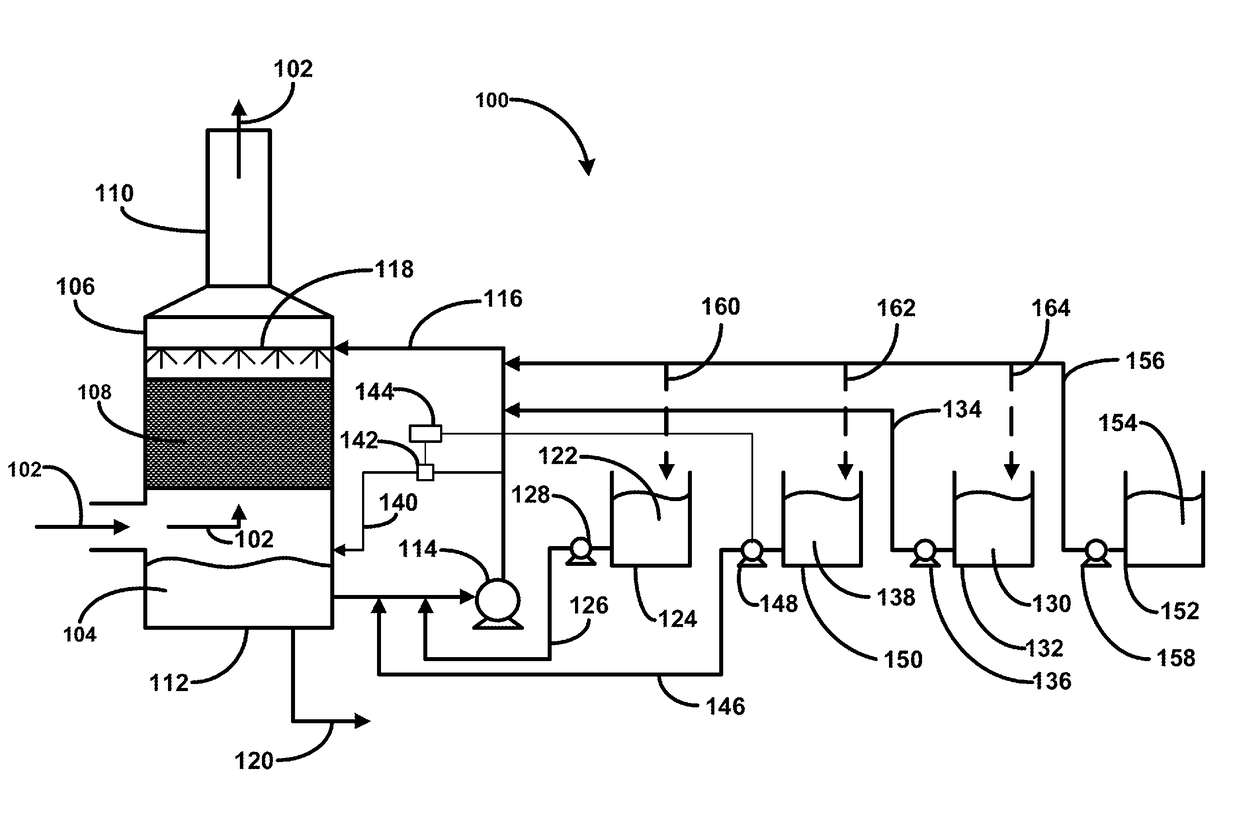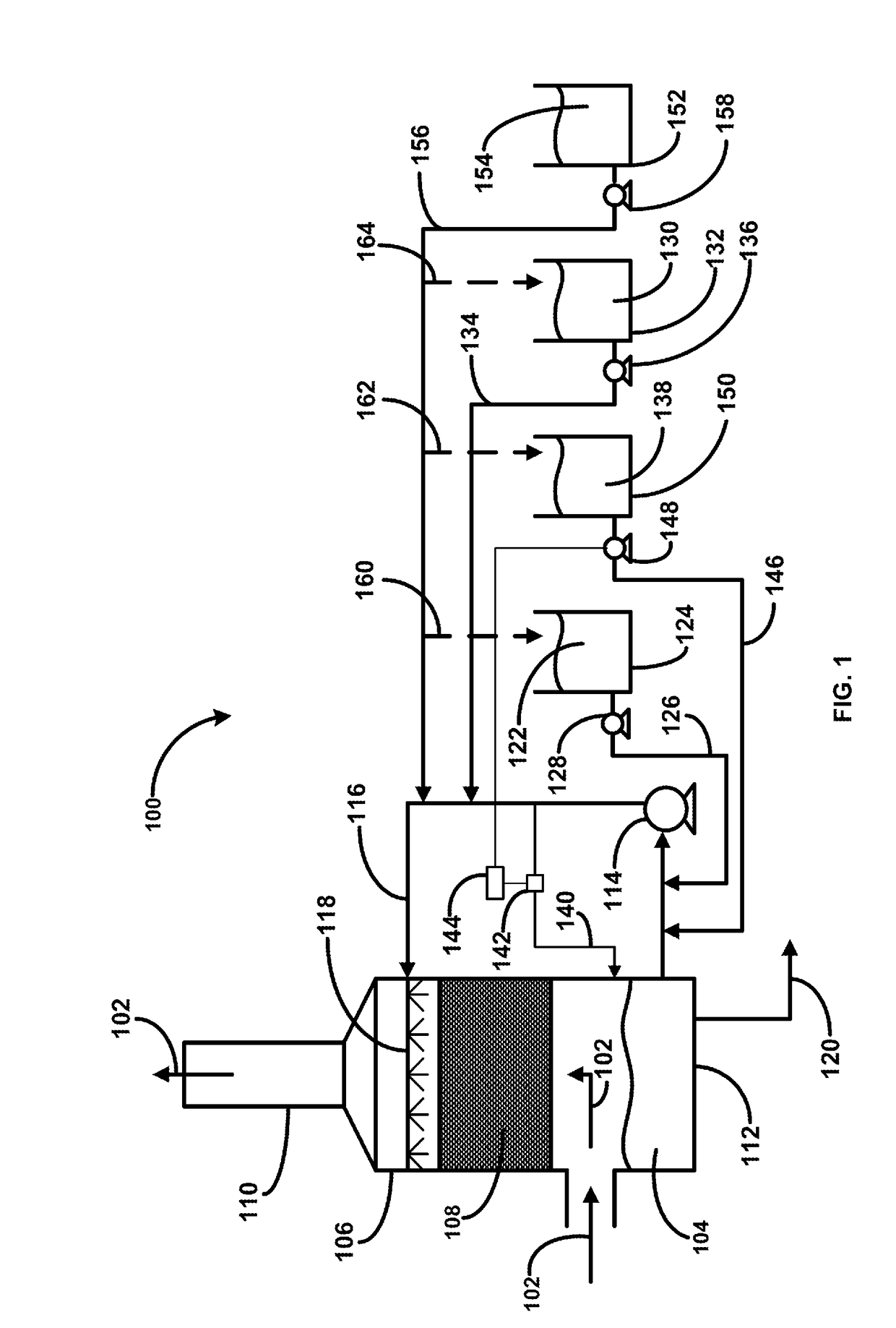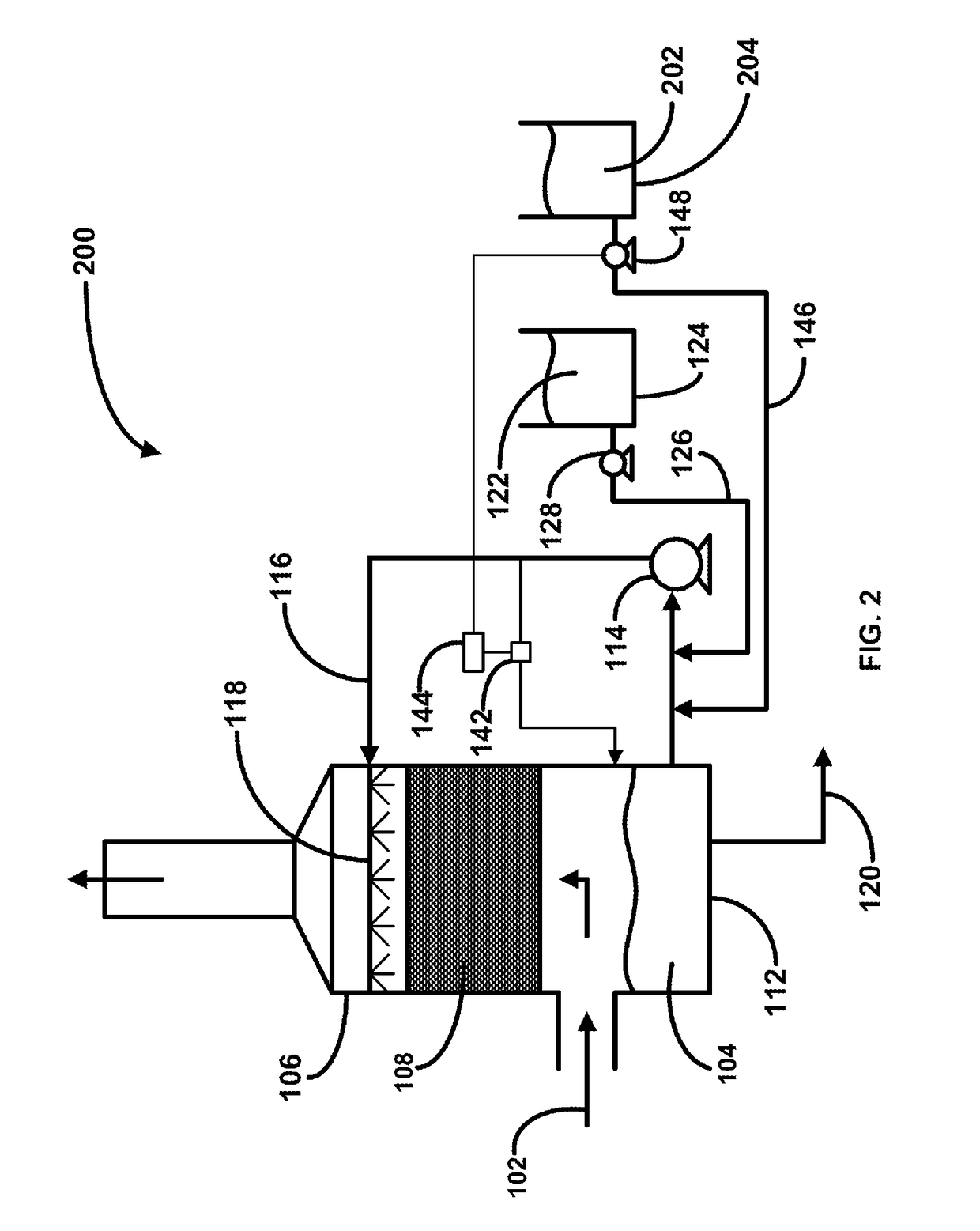Method and apparatus for treating industrial gas streams and biological fouling
a technology for industrial gas streams and biological fouling, applied in the direction of deos, atomized substances, diseases, etc., can solve the problems of biological fouling, odor production is offensive, and the scrubbing solution will quickly saturate with offensive gases and lose its absorbing potential, so as to prevent biological fouling
- Summary
- Abstract
- Description
- Claims
- Application Information
AI Technical Summary
Benefits of technology
Problems solved by technology
Method used
Image
Examples
examples
[0103]The following examples describe specific aspects of the present invention to illustrate the invention and aid those of skill in the art in understanding and practicing the invention. The examples should not be construed as limiting the present invention in any manner.
example # 1
Example #1
[0104]A 1000 ml sample of chicken feather processing scrubber water having a pH of 5.5 due to sulfuric acid addition in the scrubber reservoir was evaluated. The sample had an intense odor after treatment with chlorine dioxide. The sample was treated concurrently with 300 ppm of hydrogen peroxide (50% solution) and 100 ppm ferrous sulfate (38% solution). The reaction was instantaneous, and there was no detectable odor, other than a slight chlorine smell.
example # 2
Example #2
[0105]A 1000 ml sample from a rendering cooker was adjusted to pH 5.5 with sulfuric acid. The sample had a very intense odor. The sample was treated concurrently with 300 ppm of hydrogen peroxide (50% solution) and 100 ppm ferrous sulfate (38% solution). The reaction was instantaneous, and the odor was eliminated within 15 seconds. The sample was then undisturbed for 48 hours, and there was no re-occurrence of any odor.
PUM
| Property | Measurement | Unit |
|---|---|---|
| pressures | aaaaa | aaaaa |
| pH | aaaaa | aaaaa |
| pH | aaaaa | aaaaa |
Abstract
Description
Claims
Application Information
 Login to View More
Login to View More - R&D
- Intellectual Property
- Life Sciences
- Materials
- Tech Scout
- Unparalleled Data Quality
- Higher Quality Content
- 60% Fewer Hallucinations
Browse by: Latest US Patents, China's latest patents, Technical Efficacy Thesaurus, Application Domain, Technology Topic, Popular Technical Reports.
© 2025 PatSnap. All rights reserved.Legal|Privacy policy|Modern Slavery Act Transparency Statement|Sitemap|About US| Contact US: help@patsnap.com



